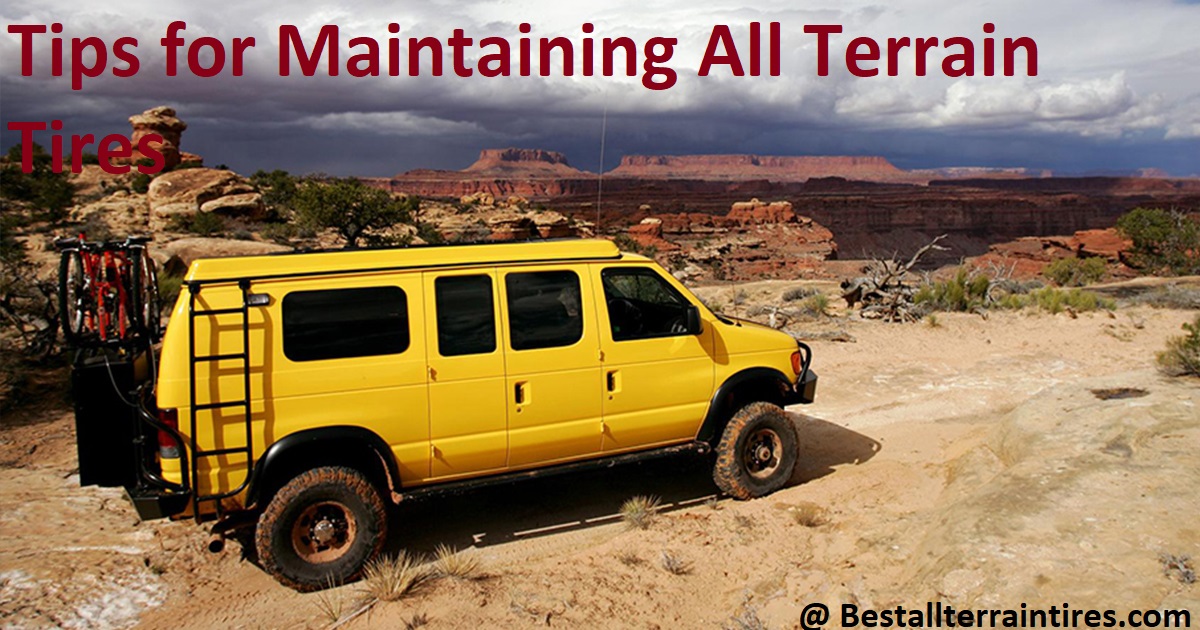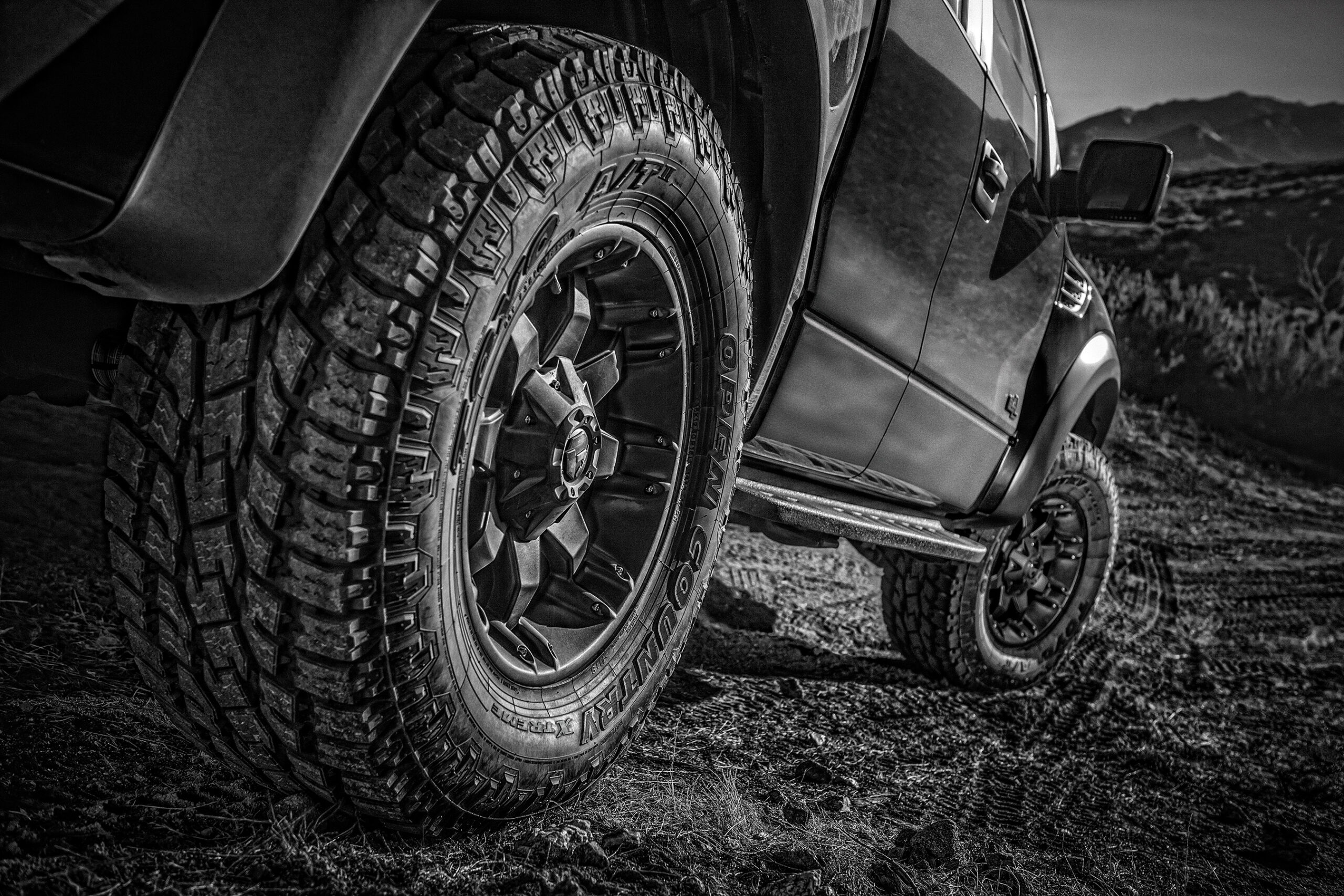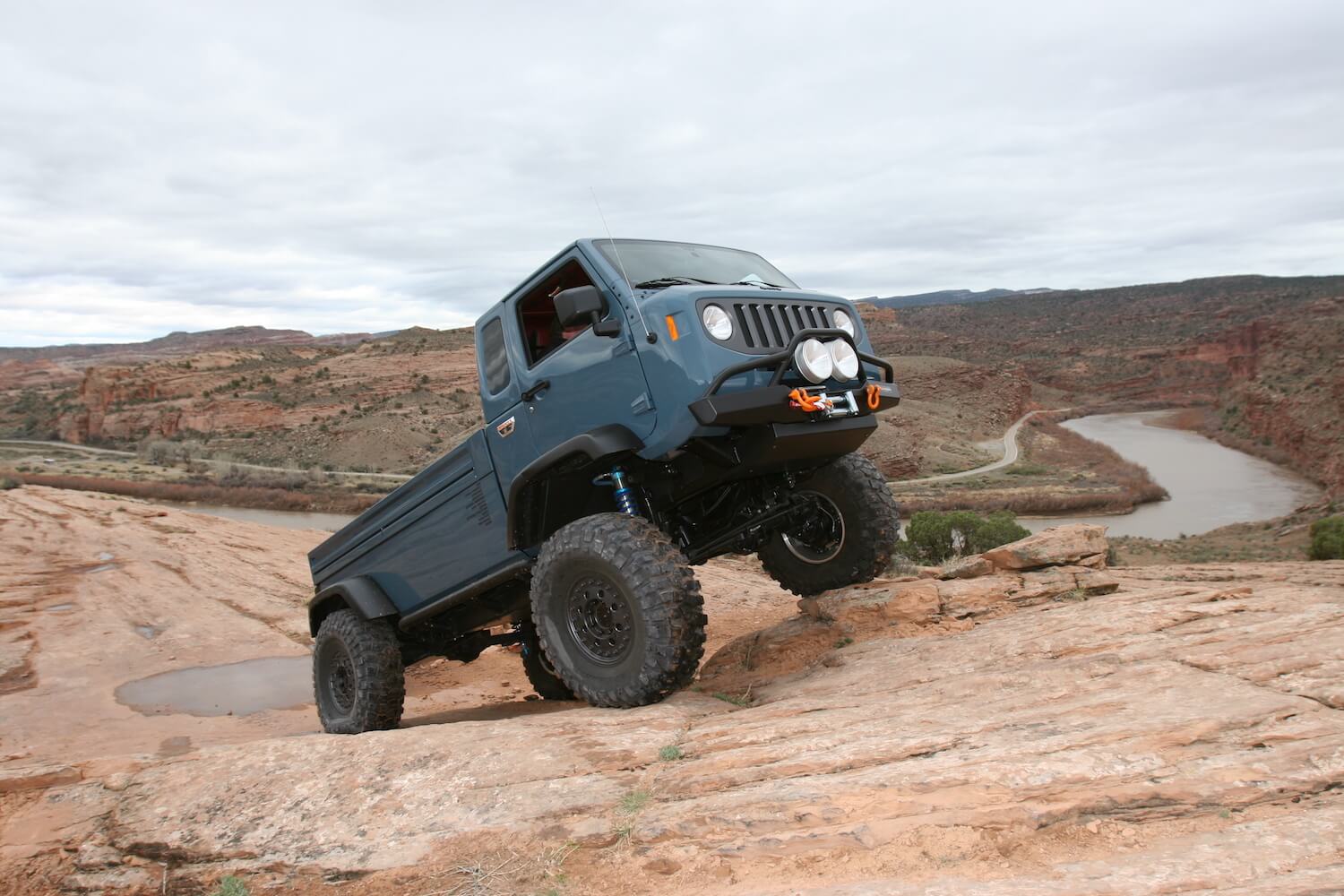Have you been on the lookout for tips on how to maintain all terrain tires? If yes, then you’ve arrived at the right place!
In this complete guide, get easy-to-follow advice and learn how to extend the life of your tires with proper maintenance. Keep reading to know more!
The introduction is the first chapter of all terrain tire maintenance and care, intended to give an overview of what you should know before beginning to care for your tires. Regular maintenance and repairs will extend the life of your tires and help them perform better. Here is a brief explanation of some basic terms in order to familiarize you with all terrain tire terminology.
Tread Depth: This is the measurement of grooves in the surface of the tread that contact the surface when driving. This helps provide traction in wet and slippery conditions as well as provide stability on turns. Manufacturers generally recommend replacing tires when tread depth is below 2/32 inches (1.6 mm) for heavy-duty vehicles, or 4/32 inches (3.2 mm) for light-duty vehicles (check manufacturer recommendations).
Lugs: Lugs are bumps that extend from the sidewall and come into contact with the ground for additional traction control. They can be sharp or rounded depending on their intended use, such as mud, snow, sand, rock crawling etc.
Wheel Roughness: This is a measurement used by tire manufacturers which represents how rough a wheel’s surface can become with wear during use over time; specifically related to uneven wear patterns or weak side-wall strength which could lead to premature failure or poor handling dynamics over time.
Explanation of what all terrain tires are
All terrain tires are designed with multi-faceted tread blocks to provide resistance against mud, sand, and gravel. They are also engineered with small voids between the tread blocks that promote self-cleaning in loose surfaces, resulting in improved grip and traction. The tires are crafted out of an advanced rubber compound that resists cracking, chipping, and tearing due to abrasion caused by rocks or other rugged elements.
All terrain tires are known for their long life-span as well as their durability at high speeds. They have proven to perform optimally on roads, off-road terrains, dry pavement and wet surfaces. The variety of benefits make all terrain tires highly desired among vehicle owners looking for a reliable tire solution for their cars and/or light trucks.

Importance of maintaining all terrain tires
Maintaining all terrain tires is an essential element of ensuring the safety and performance of your vehicle. All terrain tires, also known as ATV tires, are designed to provide optimal traction on a variety of surfaces ranging from loose gravel to mud and snow. These tires are typically wider than standard road-vehicle tires, which provides more stability and better maneuverability when traveling off-road.
To get the most out of your all terrain tire investment, it is important to perform regular maintenance checks. This guide will cover the importance of maintaining all terrain tires, some basic tips for performing regular maintenance checks, and the potential consequences of neglecting this necessary upkeep.
Inspection
Regular inspection is key to making sure that your all terrain tires remain in optimal condition and don’t require replacing or repairs. Inspect your all terrain tires at least once a month, including the sidewalls, treads, lug nut caps, and valve stems.
When inspecting the sidewalls of your all terrain tires, look for any signs of wear or damage from contact with obstacles such as rocks and branches that may be encountered during off-road driving. Also look for any visible cracks or cuts on the treads that could indicate a problem with balance or alignment. The lug nut caps should be checked frequently to ensure they have not become loose after coming into contact with water or mud.

Finally, examine the valve stem for any signs of corrosion due to weather exposure, which can have an adverse effect on pressure levels within the tire. If you find any signs of wear on either the sidewall or treads of your all terrain tires, these should be replaced as soon as possible to reduce the risk of a breakdown while out driving. Regular inspection will help you maintain control over the condition and performance of your vehicle’s tires in different off road conditions.
Regular inspection of tires
Regular tire inspections are a vital part of the upkeep and maintenance of an all terrain tire. Inspections should be done regularly throughout the life cycle of the tire to ensure that it is still intact, properly inflated, and performing efficiently. These inspections should include:
- Visually inspect tires for any signs of wear or damage such as cuts, bubbles, tracks, or any other anomaly that might indicate a problem with the integrity or performance of the tire;
- Check air pressure – tires should always be kept at their recommended pressure as specified by their manufacturers; inadequate air pressure can lead to decreased tire performance, reduced traction, and even blowouts;
- Check for proper mounting – all terrain tires require specific rims and special mounting procedures to ensure adequate hold when subjected to lateral forces in off-road environments;
- Assess tread depth – tread depth needs to be monitored regularly as certain types of terrain can quickly wear down treads leading to a decrease in off-road traction; and
- Look for cracks in sidewalls or bulges that may suggest a change in composition due to heat buildup during operation which could lead to sudden inflation failure.
Whether your tire is new or used, the above inspections are key components of safety and performance when driving on different kinds of surfaces. Proper inspection ensures your tires will last longer while providing maximum protection against unexpected hazards you may encounter off roading or in rugged terrains.
What to look for during inspection
In order to ensure the best performance of your all terrain tires and prevent any damage, it is important to regularly inspect them for any signs of wear or damage. In addition, certain elements should be inspected more frequently in order to prevent problems from arising in the future. Before you begin any inspection, it is important to check the manufacturer’s guide for tire maintenance. This guide will provide specific instructions and recommendations on how often all terrain tires should be inspected and details on what needs to be checked during your inspections.
When inspecting all terrain tires, you should look for specific indicators of wear that can take place over time due to usage and environmental factors such as UV radiation, road salts or gravity-related issues such as low inflation pressure (under-inflation) or improper alignment of wheel assembly. Some items that need to be looked at on a regular basis include:
- Sidewall condition – visually inspect the sidewall of the tires for any cracking, splits or ingrained debris which may have caused damage over time.
- Tread depth – make sure that tread depth is 2/32” (1.6mm) minimum so that traction remains adequate even in wet conditions.
- Center grooves – Check center grooves keep its pattern intact and are free from foreign objects like stones etc which could cause punctures
- Air Pressure– Regularly check tire pressure with a reliable tire gauge once per week or every couple days if you travel long distances; under-inflation could lead to uneven wear patterns on your treads as well as decreased fuel efficiency.
- Tire rotation– Rotating your tires regularly helps them last longer since uneven weight distribution causes faster tire wear in some areas than others; have a professional mechanic rotate them every 6,000 miles (10,000 kilometers).
III. Cleaning
Cleaning your all terrain tires is an important step to ensure maximum performance and longevity. Regular cleaning will help remove any dirt, mud, moisture, and other debris that can lead to decreased performance and a shorter life for your tires.
Here are some tips for proper tire cleaning:
- Wash the Tire – Use a mild dish or car soap to wash off any debris or mud from the tires. Don’t use harsh chemicals as they may cause discoloration or damage to the tire itself.
- Rinse with Water – After washing, rinse the entire tire off with water thoroughly so that no soap remains on it from the previous step.
- Dry Tire – After rinsing off any excess water, dry the tires with a microfiber cloth or towel ensuring that it is free of any lint or particles that could settle in their treads and cause damage while driving over rough terrain conditions.
- Shine – Lastly use a silicone-based spray polish on the surface of each tire until it retains a glossy shine which will further help protect them against further wear and tear over rough ground conditions that you might encounter while driving in more rugged areas.
Importance of cleaning all terrain tires
Cleaning all terrain tires is a vital step in making sure they last as long as possible. Dirty, contaminated tires can suffer from premature wear and tear, or could even render them unsafe to ride in certain conditions. Having a simple cleaning routine will ensure that your all-terrain tires remain in good condition for years to come.
Keeping your tires clean involves more than just wiping them down with a cloth; it requires careful attention and precaution when performing specific steps. Start by cleaning off any grime, mud, and debris with soap and water on a soft bristled brush. Once you have completely cleaned the tire, rinse off with warm water and let it air dry at room temperature before appliyng any protectant or sealant agents.
To really bring out the best in your tires, use specially formulated all-terrain tire cleaners that are designed to remove built-up materials like tar or sap without damaging the delicate sidewalls or rubber core of the tire. These multi-purpose cleaners come in both liquid form and paste form that can be applied directly onto the surface of the tire to refresh its appearance without fading colors or damaging its protective finish coat. Especially when used in combination with other compounds such as waxes and shine enhancers, these products yield maximum results while conditioning and reviving all terrain tires for better performance on tough surfaces like dirt or gravel roads.
Recommended cleaning products
Cleanliness is essential for the maintenance and performance of any All Terrain Tire. The recommended cleaning products for All Terrain Tires include:
-Mild soap and water: A mild detergent, such as liquid dishwashing soap, should be mixed with warm water And used on a cloth or sponge to clean dirt and road grime from the surface of the tire. Avoid harsh chemicals like bleach or outdoor cleaners that are not specifically designed for tires.
-Cleaners specifically designed for tires: These products are formulated to remove dirt, grime, and tree sap from the tire’s surface without causing any damage. Follow the manufacturer’s instructions when using these products on your tires. It’s also important to read all safety warnings before using them.

-Wheel and rim detailing brush: This specialized brush is designed to make it easy to clean in crevices around the exterior of rims or spokes that can harbor dirt and debris. Be sure to use extra care when working around delicate parts on wheels like chromes or alloy rims so that you won’t scratch them in the process.
-All-purpose automotive spray detailer: Many vehicles come with a product specifically designed for cleaning various surfaces on vehicles including paint finishes, chrome wheels, bumpers, mud flaps, side walls of tires, fender wells and other hard surfaces around vehicles where dirt can accumulate including All Terrain Tires.
Conclusion
After thousands of miles on all-terrain tires, proper maintenance is the key to preserving and prolonging the life span of your off-road tires. Tire rotation, alignment, balancing and replacement should all be a part of your regular tire maintenance routine. All-terrain tires can sometimes be difficult to manage and require special care in order to run optimally. Fortunately, with the right advice and supporting products all-terrain tires can give your vehicle the performance you are looking for.
It is important to remember that each situation is unique and will require individual attention in order for your all terrain tires to perform properly. When purchasing an off-road tire, always invest in quality construction from a reputable manufacturer. Additionally, be sure to have your suspension components professionally inspected on a regular basis so that any potential problems can be identified quickly before they become costly damage repairs or replacements. With proper care and maintenance all terrain tires will keep you driving with confidence no matter where you decide to take it!
FAQs
How do I keep my tires in good condition?
To keep your tires in good condition, you should regularly check the air pressure and maintain it at the recommended level, avoid overloading your vehicle, drive carefully to avoid sudden stops and starts, keep your tires clean and free from debris, and have them inspected regularly by a professional.
What is the most important tire maintenance?
The most important tire maintenance is to check the air pressure regularly and maintain it at the recommended level. Proper air pressure ensures that the tire wears evenly, improves fuel efficiency, and enhances safety on the road.
What are three things that are recommended regularly to properly maintain automotive tires?
Three things that are recommended regularly to properly maintain automotive tires are checking the air pressure, rotating the tires, and having them inspected by a professional.
How long can tires sit unused?
Tires can sit unused for up to six years before they start to degrade, but it is recommended to replace them after six years regardless of the condition.
What is the #1 cause of problems with tires?
The #1 cause of problems with tires is underinflation, which can lead to uneven wear, reduced fuel efficiency, and increased risk of blowouts.
How do I check if my tires are healthy?
You can check the health of your tires by inspecting them regularly for signs of wear or damage, measuring the tread depth with a gauge, and checking the air pressure to ensure it is at the recommended level.
How often should tires be rotated?
Tires should be rotated every 6,000 to 8,000 miles, or as recommended by the vehicle manufacturer, to ensure even wear and prolong their lifespan.
What are the most common tire problems?
The most common tire problems are punctures, sidewall damage, worn or uneven tread, and underinflation.
What is the best tire repair method?
The best tire repair method is to have the tire patched or plugged from the inside by a professional, as this provides a permanent fix and maintains the structural integrity of the tire.
What are the 3 different qualities of tires?
The three different qualities of tires are performance, economy, and all-season. Performance tires are designed for high-speed handling and cornering, economy tires offer good fuel efficiency and low cost, while all-season tires provide reliable traction in various weather conditions.
See Also-
- Best all terrain tires for 22 inch rims
- Best all terrain tires for chevy silverado 1500
- Best All Terrain Tires For Daily Driving
- Best All Terrain Tires For Diesel Trucks
- Best All Terrain Light Truck Tires
Jose T. Salazar is a passionate automotive enthusiast and tire expert, dedicated to helping fellow drivers conquer all types of terrain. With a lifelong fascination for cars and a deep knowledge of tires, he has made it his mission to guide readers towards making informed decisions about their tire choices.Read more about our team members.

